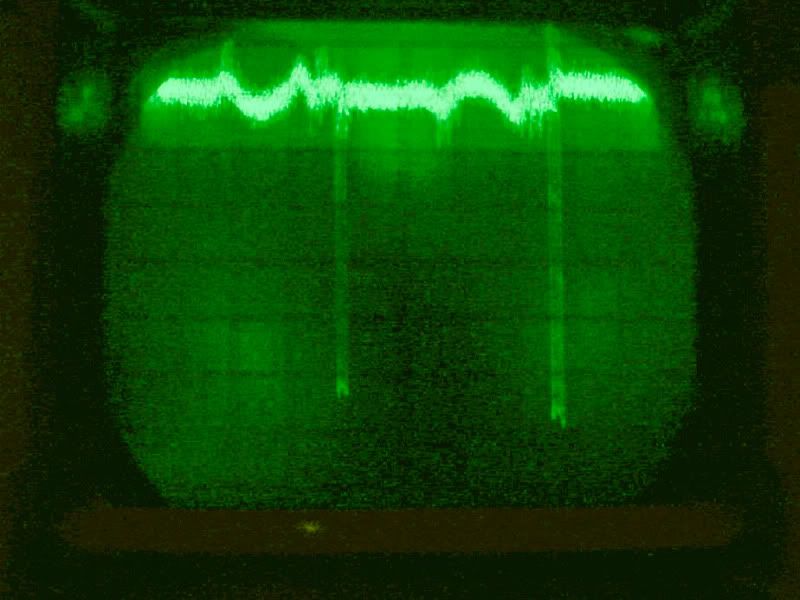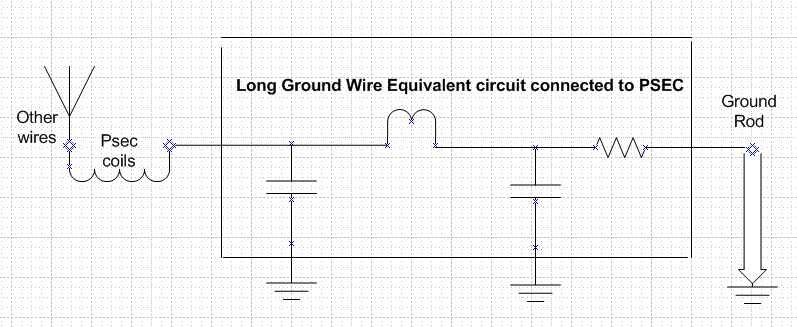Originally posted by minoly
View Post
@stiffler
Having conversations by proxy always get interesting.
I cannot speak for Nick but it is my understanding that he was talking about 60 cycle "noise" on the ground wire, not 60 cycle sine wave.

Noise of course can be "any" frequency see the above picture, that is an "incredibly" noisy ground wire.
I am sure you realize that when you get a coil very near self resonance it does not take much to keep going and ground wires can carry heavy currents from devices with little ability to take a voltage measurement since it is so low. (the resistance of the wire.)

Finally I am also sure you realize that this is a rough equivalent circuit of a long ground wire and while it makes its way to ground eventually it can often make a better antenna than a ground.
The test you did was not on point. In other words best I can tell you disproved what was never claimed.
Its my understanding and feel free to correct me if I am wrong, that the claim was ac (et al) line noise that when the ac mains were shut off the coil stopped working.
Unfortunately the only way I can imagine making a really conclusive test is to go out into the field as I have stated.

I have no need to waste my time replicating what appears to me to be obvious.
On the other hand if one of your replicators want to prove it to themselves and do so I think that would be a great idea. (oh and btw covering the freq
 )
) Remember, I ALSO said lots of good things about your work so far.

regards,
kj


 because of wishing to explore them a bit before moving along. So, loopsticks are being looked at.
because of wishing to explore them a bit before moving along. So, loopsticks are being looked at.
Comment